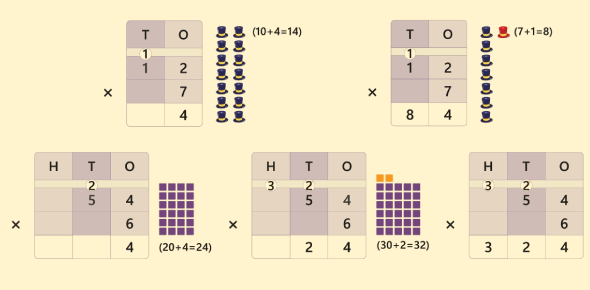Basic Addition and Regrouping Step-by-Step Methods & Examples
Lesson Overview
- What Does Basic Addition Involve?
- What Is Regrouping and Why Is It Necessary in Addition?
- How Do You Perform Addition with Regrouping Step-by-Step?
- How Does Place Value Affect Accuracy in Regrouping?
- What Are Common Mistakes in Regrouping and How Can You Avoid Them?
- Why Does Regrouping Matter in Real-World Scenarios?
- How Can You Strengthen Your Skills in Basic Addition and Regrouping?
- What Advanced Techniques Support Mastery of Addition and Regrouping?
Basic Addition and Regrouping mistakes often complicate simple calculations, causing frustration and inaccuracies, especially in budgeting or measurements. This lesson provides thorough practice, examples, and systematic techniques, ensuring accurate regrouping and simplifying addition problems.
What Does Basic Addition Involve?
This section clarifies the fundamentals of addition, detailing essential terminology and explaining its mechanics.
Basic addition involves combining numbers (addends) to form a larger number (sum). Understanding addition deeply helps you navigate mathematical problems efficiently, building the groundwork for more complex operations like multiplication and algebraic calculations.
Key Addition Concepts:
- Addends: The numbers added together.
- Sum: The result of adding addends.
Example:
Consider adding 58 and 27:
- Addends: 58, 27.
- Calculation: 58 + 27 = 85.
- Sum: 85.
What Is Regrouping and Why Is It Necessary in Addition?
This segment will clearly define regrouping and explain why it's vital for managing larger numerical sums.
Regrouping, often called carrying over, is necessary when the sum of digits in a particular place exceeds nine. Regrouping systematically manages place value overflow, ensuring mathematical accuracy.
Regrouping Process Explained:
- Identify when a digit sum exceeds nine.
- Transfer excess value to the next higher place value.
Comprehensive Example:
Add 76 and 45:
- Units column: 6 + 5 = 11. Write 1, regroup 1 (ten).
- Tens column: 7 + 4 + 1 (regrouped) = 12. Write 2, regroup 1 (hundred).
- Hundreds column: Place regrouped 1.
- Final result: 121.
How Do You Perform Addition with Regrouping Step-by-Step?
Here, you'll methodically explore the process of addition involving regrouping, improving accuracy and understanding.
Detailed Step-by-Step Method:
- Align numbers vertically by place value.
- Begin adding from the rightmost digits.
- When digit sums exceed nine, regroup.
- Move leftward, incorporating regrouped digits.
Practical Illustration:
Calculate 34 + 78:
- Units: 4 + 8 = 12 (write 2, regroup 1).
- Tens: 3 + 7 + 1 = 11 (write 1, regroup 1).
- Hundreds: 1 (regrouped) = 1.
- Sum: 112.
How Does Place Value Affect Accuracy in Regrouping?
Understanding the place value system deeply ensures accurate numerical handling, critical in complex mathematics and scientific computations.
Place Value Explanation:
- Units (ones): Immediate right.
- Tens: Second from right.
- Hundreds: Third from right.
Scientific Perspective:
Place value understanding underpins numerical accuracy, essential in engineering calculations, scientific measurement conversions, and statistical analyses.
What Are Common Mistakes in Regrouping and How Can You Avoid Them?
In this section, you will identify common regrouping mistakes and methods for avoiding them.
Common errors include misalignment of digits and incorrect regrouping.
Mistakes and Preventative Measures:
- Misalignment: Align numbers clearly by place values.
- Incorrect regrouping: Always carefully add regrouped digits to the subsequent column.
Example to Illustrate Mistake:
Incorrect calculation of 49 + 34 (units column: 9+4=13 incorrectly written as 3, regrouping overlooked): Correct approach is units=13 (write 3, regroup 1), tens=4+3+1=8. Accurate result is 83.
Why Does Regrouping Matter in Real-World Scenarios?
Here, you'll explore practical scenarios where regrouping is essential, providing deeper understanding of its real-world implications.
Regrouping matters significantly in financial, scientific, and engineering contexts.
Real-world Application:
In banking, regrouping ensures accuracy in account balancing and financial reporting. Engineers rely on precise regrouping when calculating structural dimensions.
How Can You Strengthen Your Skills in Basic Addition and Regrouping?
Regular practice and critical analysis help solidify your understanding and proficiency in these foundational mathematical operations.
Practice Problems:
Solve and reflect on these regrouping problems:
- 88 + 44
- 57 + 68
- 92 + 39
Real-Life Scenario Analysis:
Discuss potential impacts of incorrect addition in real-life contexts such as pharmacy dosages and construction measurements.
What Advanced Techniques Support Mastery of Addition and Regrouping?
Exploring advanced techniques can further solidify your proficiency.
Techniques:
- Mental math strategies for quick regrouping.
- Estimation skills to cross-check answers quickly.
Example:
Estimate 69 + 27 quickly: approximately 70 + 30 = 100. Precise calculation confirms: 69 + 27 = 96.
Take This Quiz!
Rate this lesson:
 Back to top
Back to top
